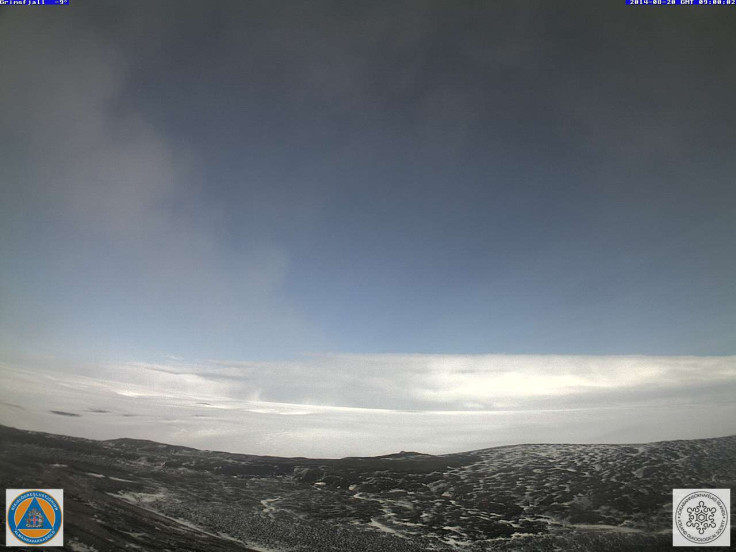Bardarbunga Volcano, Iceland: Experts Warn of 'Explosive Subglacial Eruption', Floods and Flight Disruption

The Bardarbunga volcano in Iceland is at risk of an "explosive subglacial eruption" following increased seismic activity at the site, authorities have warned.
The Icelandic Met Office said "intense" seismic activity began on 16 August and has persisted ever since: "Very strong indications of ongoing magma movement, in connection with dyke intrusion, is corroborated by GPS measurements," it said.
On the morning of 18 August, a strong earthquake was detected in the Kistufell swarm: "This is the strongest earthquake measured in the region since 1996. As evidence of magma movement shallower than 10km implies increased potential of a volcanic eruption, the Bardarbunga aviation colour code has been changed to orange.
"Presently there are no signs of eruption, but it cannot be excluded that the current activity will result in an explosive subglacial eruption, leading to an outburst flood and ash emission."
The orange alert level relates to the level of risk to air travel and suggests the volcano shows escalating unrest or an eruption without any ash emissions.
A red alert means an eruption is "imminent" or is currently taking place with significant emissions of volcanic ash. The 2010 Eyjafjallajokull eruption led to the cancellation of over 100,000 flights because of the huge ash cloud it produced.
The Bardarbunga volcano is located 2km above sea level, but 700m below the ice. It last erupted over 100 years ago.
The Icelandic National Broadcasting Service has placed a live webcam about 30km from the volcano, with still images updated every few minutes.
Dave McGarvie, a volcanologist at The Open University, wrote an article for the Conversation discussing how likely an eruption at Bardabunga would be, and what impact it would have if it does blow.
"There is no way to predict when the eruption may happen, but we should get a few hours' notice. The good news for air travel is that both clusters are away from the heart of the main volcano which makes it less likely that an eruption will produce the fine ash that causes disruption."
He said if the magma breaks through the ice, there is a risk of flooding as the molten rock melts the ice.

"At the very least, magma will stall in the Earth's crust and form an intrusion. We may never see any manifestation of this, except on instruments. But if magma does break through to the surface, then how much magma erupts and what is above it will determine the eruption style ... The 'likeliest' scenario could change at a moment's notice. That is part of the fun and frustration of anticipating eruptions at poorly-known and remote volcanoes."
Speaking to Slate, Icelandic anthropologist Ásdís Jónsdóttir said an eruption at the site is not unlikely: "It is perhaps interesting to note that the theory is that Iceland is formed because a hot-spot and the mid-Atlantic ridge coincide. This part of Iceland is thought to be at the centre of the hot-spot.
"Bardarbunga and Grímsvötn have fed some of the largest eruptions in Iceland, such as the catastrophic 1783 eruption in Laki (not situated under the glacier) which is the greatest natural disaster in Iceland's history.
"There are also signs of huge floods from this area in northern Iceland before the settlement—such as the canyons of Ásbyrgi and Jökulsárgljúfur in northern Iceland."
Meanwhile, Melissa Anne Pfeffer, atmospheric volcanologist at the Icelandic Met Office, said air traffic will be disrupted if the winds currently being seen continue. She also said there is no way of knowing what will happen if it erupts: "If the volcano erupts - which we don't know - how explosive or non-explosive the eruption is depends entirely on where the magma reaches the surface."
© Copyright IBTimes 2025. All rights reserved.






















